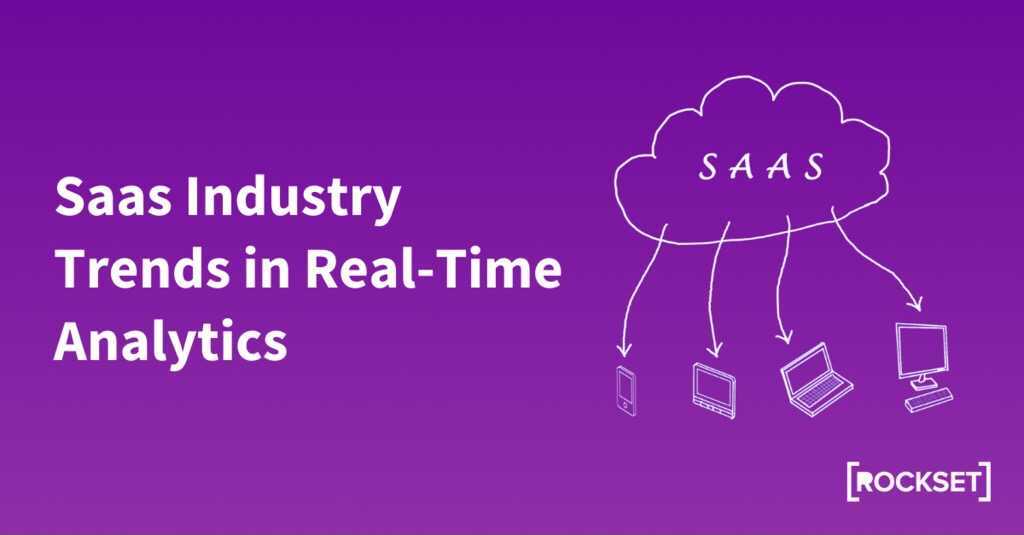SaaS Industry Trends in Real-Time Analytics
May 13, 2021

We're seeing a lot of growth in real time analytics, ranging from companies that are delivering snappy, interactive experiences within their application to those doing semi-autonomous or autonomous machine learning processes. Companies are giving their users real-time data and insight with the goal of taking immediate action. This is the real time analytics trend that we're seeing across the SaaS industry. We're seeing huge growth in real time analytics and the number of SaaS companies are actually dedicated to building analytics and AI.
In the security space, COVID has pushed many companies to work from home and security teams are being tasked with protecting a much larger area of infrastructure including email, home offices as well as their network environments. And they're doing that at the same time that there's a wave of more sophisticated cyber-attacks. And so more companies are looking towards security analytics solutions to help them navigate that.
In logistics, a McKinsey survey showed that 85% of respondents really struggled with inefficient digital technologies in their supply chain. So more companies are looking towards greater insight and also looking at new areas of risk that are popping up as a result of COVID. We're seeing companies come to market where they're bringing end-to-end visibility into the supply chain.
Sales and marketing SaaS companies are showing a lot of growth with conversational bots, personalization efforts as well as more paper focused targeting solutions in analytics. So Gong for example, in the revenue space, is helping to increase productivity of sales teams by automating a lot of the manual processes of updating their CRM solution. As we're seeing with Slack and Gong and other solutions, AI and analytics is really fostering greater productivity on those teams.
What is Real Time analytics?
There are four main characteristics of real-time analytics:
Low data latency - this is the time from when data is generated to when it is available for analytics. For example, with a logistics company, they want to do real-time route optimization using the latest GPS, weather and inventory data to optimize routes. If there is a delay in getting that data, it may result in sub optimal route decisions.
Low query latency - application users want speedy, snappy, responsive applications that they are querying and interacting with. One of our B2B customers set their standard for real time analytics query latency because it needs to be the speed of Instagram. If you think about Instagram, you're scrolling on the app, it's showing you relevant pictures and videos from users on that app and that's all coming through using an algorithm.
Complex analytics - You need to join and aggregate data across multiple product lines to be able to better understand relationships. This requires systems that can support large scale aggregations and joins as well as search.
Scale - If you're a SaaS company, you want to have the same snappy, responsive experience for your customers as you're scaling the number of users in your application.
Challenges Application Builders Face
Analytics systems were not designed for speed - Many analytics systems were built for batch and slow queries and so it's challenging to retrofit these systems for the millisecond latency queries requirements of real time analytics and to do that in a compute efficient way.
Growth in constantly changing semi-structured data - if a SaaS company were seeing many start with an initial machine learning algorithm or a set of analytics that they're embedding into their application and they want to be able to expand those capabilities over time, but iterating is challenging when there's constantly changing semi-structured data that requires a significant amount of performance engineering to get those latency requirements that you need.
Complexity of operating systems at scale - Many companies we’ve worked with said they have managed large scale distributed data systems... and they just don't want to do it again. They want to keep their lean engineering teams focused on building their apps and not on managing infrastructure. So we're seeing developers want systems that are fast, flexible and easy for real-time analytics.
Unprecedented growth in demand of real-time analytics in SaaS is due to growing customer expectations and data expansion and application builders face growing challenges in building their own analytics solutions into their applications. Learn more about how 3 SaaS companies built real time analytics at scale.